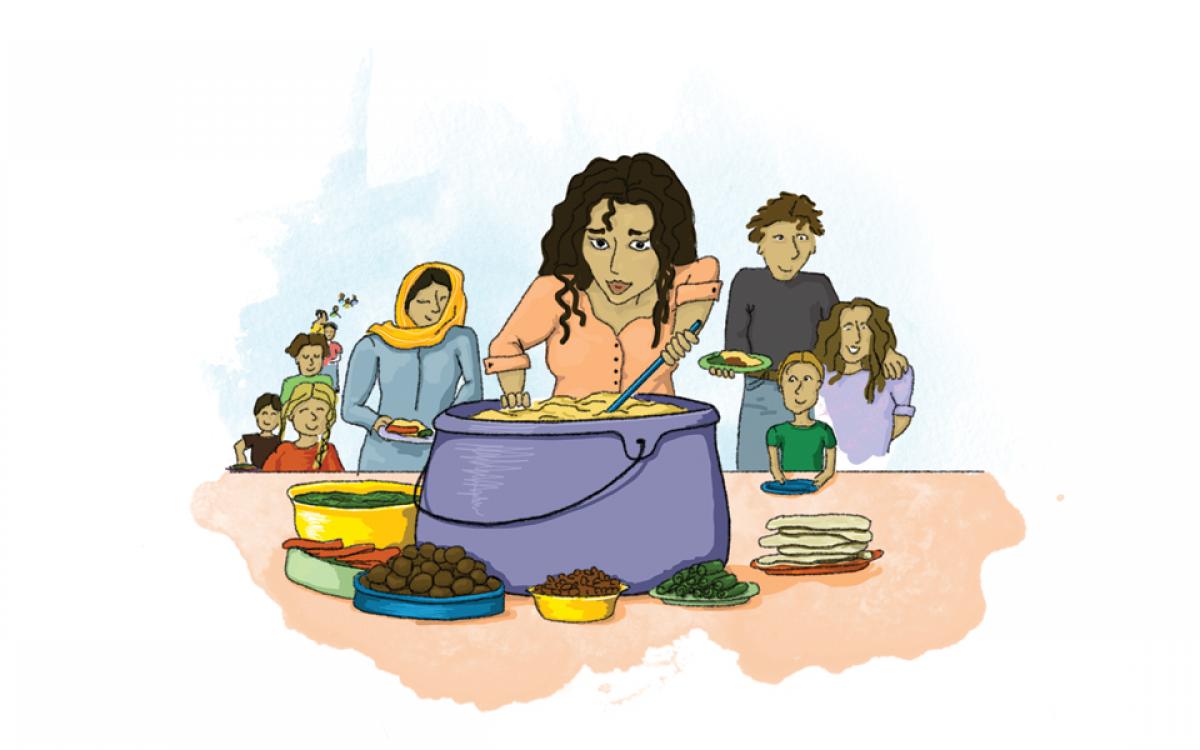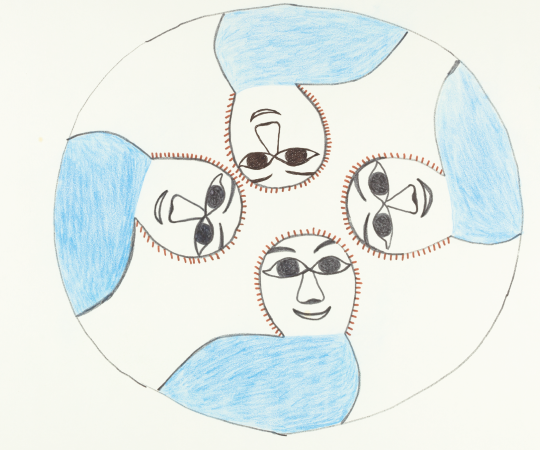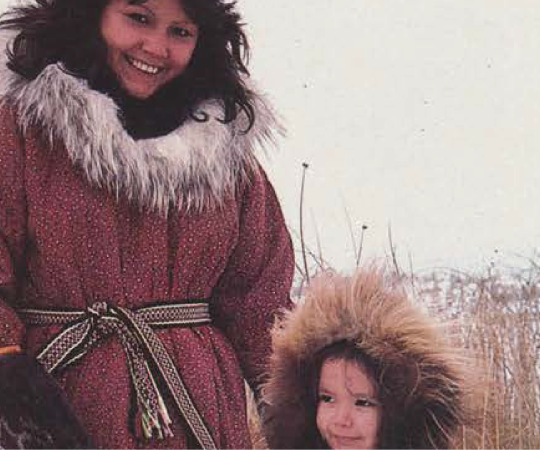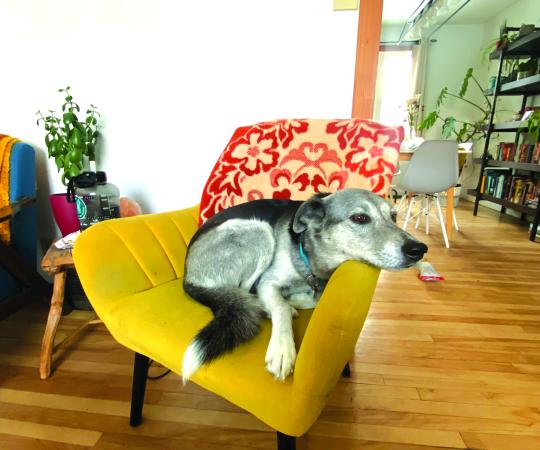Everyone was too busy to notice the new volunteer stepping into the bustling kitchen of a Yellowknife high school on a Saturday evening last November. One woman had just opened an oven door to examine the chicken roasting within, her bright cheeks flushed against the puff of garlicky steam. Beside her, another cook stirred a stockpot of cumin-rich lentil soup. About 15 women in all lifted pot lids to check on basmati rice, sprinkled paprika on golden-brown potato wedges, or cradled wide dishes in their outstretched arms as they shuttled them out to the neighbouring gym. I lingered at the doorway inhaling the scents of home. If I closed my eyes, this could be my grandmother’s kitchen in Syria before a family dinner.
I introduced myself to the woman tending to the chicken and she put me to work. For two days, she and the other volunteers had prepared enough food for 200 Yellowknifers, including the mayor, ahead of a fundraiser to sponsor Syrian refugees. The city of just under 20,000 would raise $20,000 at this event alone.
As I served hummus out of a giant vat that evening, I considered the sheer generosity of Northerners. Though Yellowknife is struggling to find a long-term solution for its growing homeless population, and although smaller Northwest Territories communities still lack crucial infrastructure and facilities, people are going out of their way to host newcomers from across the world. Yellowknife is poised to receive five refugee families in the coming year, and local businesses are pitching in to provide housing, brand-new clothes, furniture, kitchen equipment and toys.
In many ways, the North reminds me of the country I grew up in. Like the North, Syria’s borders have long been drawn and redrawn by distant powers and empires. And both are regions whose natural resources have attracted foreign interests over the past century.
Though they’ve sampled local dishes—Hussein even tried caribou meat, which the kids wouldn’t touch—they’re clinging to whatever familiar ingredients they can find.
The people aren’t so different either, except Northerners won’t bat an eye at -40 C, whereas Syrians are more accustomed to 40-above. Like Northerners, Syrians have a deep connection with their homeland, are proud of their heritage, and cherish their traditions. When they meet a traveller, or have a guest in their home, they share what they have, no matter how little it is.
“The people here are extremely kind, good-hearted,” Hussein Aarafat told me when I called him in Whitehorse in April. He and his wife Fatima, along with their nine children, arrived in the Yukon at the end of January after fleeing their embattled village in Syria and living in limbo in Beirut, Lebanon, for years.
Still stunned to find themselves in the North, it’ll take some time for the Aarafats to settle in. Their only connection to the life they left behind is the food they cook at home. Though they’ve sampled local dishes—Hussein even tried caribou meat, which the kids wouldn’t touch—they’re clinging to whatever familiar ingredients they can find.
I know the feeling. Whenever I’m homesick for Syria, my parents send me care packages of spices, pomegranate molasses and rosewater. It makes me think of some of my Inuit friends, who tell me that when they went south for school, the best days were when family or friends brought by country foods like Arctic char, maktaaq or caribou, and they’d have a feast.
Was there anything I could send the Aarafats?
“Well, I can find zaatar here,” Hussein said shyly, referring to a mix of thyme, sumac and sesame seeds, usually sprinkled onto strained yogurt or stirred into olive oil as a dip for pita bread. “But not the halabi kind. There’s nothing in the world like halabi zaatar.”
There really isn’t. Halabi zaatar is from Aleppo, a couple hundred kilometres north of the village where the Aarafats once lived. It smells like the earth.
I’d try and find him some, I promised. For a moment, even in the cold subarctic air, a whiff of zaatar would take him and his family home.










